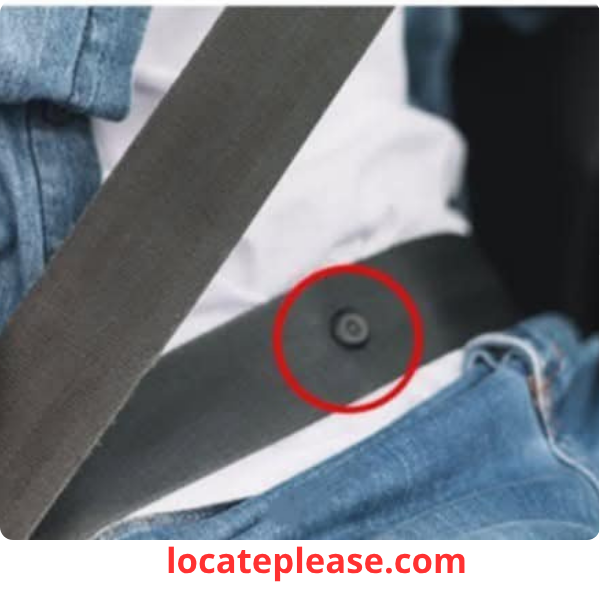You buckle up every day without thinking — a quick click, a tug, and you’re ready to go.
The seat belt is one of the most important safety features in your car, saving thousands of lives each year. But have you ever noticed that small, round button on the shoulder strap?
It’s the same color as the belt, often overlooked, always there.
You might have brushed your hand against it and wondered:
What is that? Is it just a clip? A design detail?
No.
According to Alain, a mechanic with 35 years of experience and a lifelong advocate for road safety, this tiny button is far more important than you think.
And once you understand its purpose, you’ll never look at your seat belt the same way again.
What Is the Little Button on the Seat Belt?
That small, round plastic or metal piece on the shoulder portion of your seat belt is called the seat belt guide — or more technically, the shoulder belt adjuster or height adjuster button.
It’s not just decorative.
It’s a safety-critical component designed to:
✅ Keep the seat belt properly positioned
✅ Prevent discomfort and injury
✅ Ensure maximum protection in a crash
How It Works: More Than Just a Clip
The button isn’t just fixed in place — it glides up and down on the guide track behind your seat. Its main jobs are:
1. Maintains Proper Belt Alignment
- The seat belt is designed to rest across your shoulder and chest, not your neck or face.
- Without the guide, the belt could slip forward, backward, or ride up during driving.
- The button keeps the belt in the ideal position, ensuring it spreads force safely during impact.
2. Prevents Neck and Facial Injuries
- If the belt rides too high, it can cut into your neck during sudden braking or a collision.
- In severe cases, this can cause serious injury — especially for children or smaller adults.
- The guide anchors the belt across the strong clavicle and torso, not the delicate neck.
3. Reduces Discomfort and Encourages Use
- A poorly positioned belt can be uncomfortable — leading some people to tuck it behind their back or under their arm (which is dangerous and illegal in many places).
- The adjuster button helps the belt sit comfortably, making it more likely you’ll wear it correctly — every time.
4. Works With the Pretensioner System
- In modern cars, seat belts are equipped with pretensioners — devices that tighten the belt instantly in a crash.
- The guide ensures the belt moves correctly when the pretensioner activates, maximizing its effectiveness.
Why Mechanics Like Alain Say It’s “Essential”
Alain, who has inspected thousands of vehicles and studied crash reports, puts it simply:
“That little button? It’s not a detail. It’s part of a life-saving system. When it’s broken or missing, the seat belt can’t do its job.”
He’s seen cases where:
- A loose guide caused the belt to slip during a crash, leading to chest injuries
- A missing button led to improper wear, reducing protection
- Passengers thought the belt was faulty — when it was just misaligned
“A seat belt is only as good as its positioning,” he says.
“And that button? It’s what keeps it in place.”
Common Issues — And What to Do
Even small damage to the seat belt guide can compromise safety. Watch for:
- The button won’t stay in place or slides too easily
- The belt rubs against your neck or slips off your shoulder
- The guide track is cracked or broken
- The button is missing entirely
✅ What to do:
- Never tape or glue a broken guide — it won’t hold in a crash
- Visit a dealership or certified mechanic — seat belt systems are not DIY repairs
- Check your car’s manual for proper adjustment instructions
Can You Adjust the Height? (Yes — And You Should!)
Many cars have adjustable seat belt anchors (especially in front seats).
To adjust:
- Locate the guide near the top of the seat.
- Press the release button (if present) and slide the guide up or down.
- Set it so the belt runs diagonally across your shoulder and chest, not your neck or stomach.
👍 Ideal position: The belt should pass over the collarbone, not the neck or face.
Final Thoughts: Small Part, Big Responsibility
That little round button on your seat belt isn’t a random clip or design quirk.
It’s a precision-engineered safety component — silent, unobtrusive, but vital.
It ensures that when the worst happens, your seat belt protects you the way it was designed to.
So next time you buckle up, take a second to check:
- Is the belt guide in place?
- Is the belt sitting correctly?
- Is it comfortable — and safe?
Because in a car, every detail matters.
And sometimes, the smallest parts save the biggest moments.
Click. Adjust. Drive safely.
Your life may depend on it.










